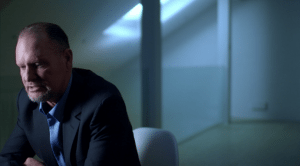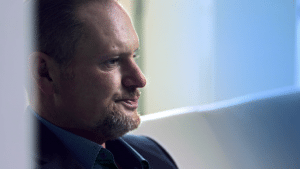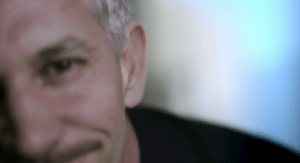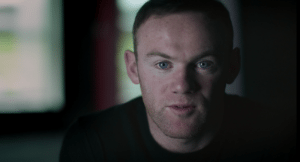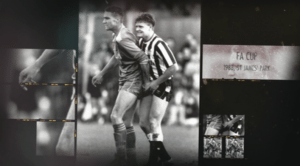24 May How to Find Visual Inspiration for your B2B Video
If you are responsible for commissioning video you’ll want a result that stands out from your competitors; TV and film are a good source of inspiration.
Let’s take the documentary about Paul Gascoigne currently showing on Netflix. The Director of ‘Gazza’ (Jane Preston) and Cinematographer (Patrick Smith) use some clever techniques from which B2B marketers can draw inspiration.
1.Lighting and Composition
It seems the Director was challenged by a fairly dull location. Creative composition, very shallow depth of field and hardish lighting however have delivered some great results. This doesn’t come easily though, and requires a lighting cameraman with excellent cinematography skills.
2. Use of Slow Motion
The film is populated with extreme close-ups of the contributors who, when moving, drift in and out of focus. These non-speaking ‘cutaways’ are recorded at high frame rates to create slow motion, and the two techniques give a lovely ethereal effect.
3. Use of the Interrotron
This piece of equipment coaxes powerful and emotional responses from the contributor and makes the audience feel they are being directly spoken to, in this case by Wayne Rooney.
The Interrotron, an invention of the brilliant Oscar winning documentary film-maker, Errol Morris, uses teleprompters as a sort of teleconferencing two-way mirror, allowing both interviewer and interviewee to look into the camera lens while also looking at one another. The result: a more personal and conversational style of interview.
Morris uses this technique to great effect in his documentary “The Fog of War: Eleven Lessons From The Life of Robert S. McNamara” for which he won an Academy award for Best Documentary in 2003.
4. Presenting Photos and other Static Images
I admire the way the archive photographs are presented in this documentary. Not only are they visually appealing, but they cleverly draw in the eye to focus on the subject under discussion at any given point in the film.
It’s possible that some of these techniques have been employed out of necessity; e.g. low budget; uninspiring locations; very limited time with high-profile contributors; pushing the director to be creative in order achieve something visually interesting.
So, in a world where one corporate office looks pretty much the same as the next, it’s more important than ever to be confident using the many creative techniques available. One way of course is to use an experienced and talented crew to achieve a film that stands out from the crowd, drive increased engagement among your target audience.
I would love to hear from you about any inspiration you have had from films and TV which have influenced your business communications.





